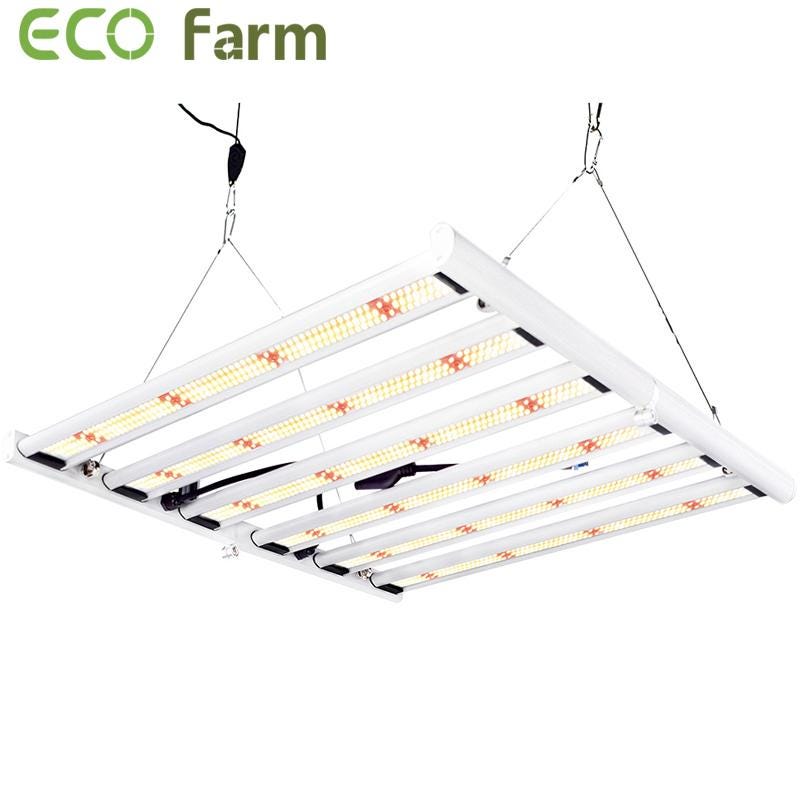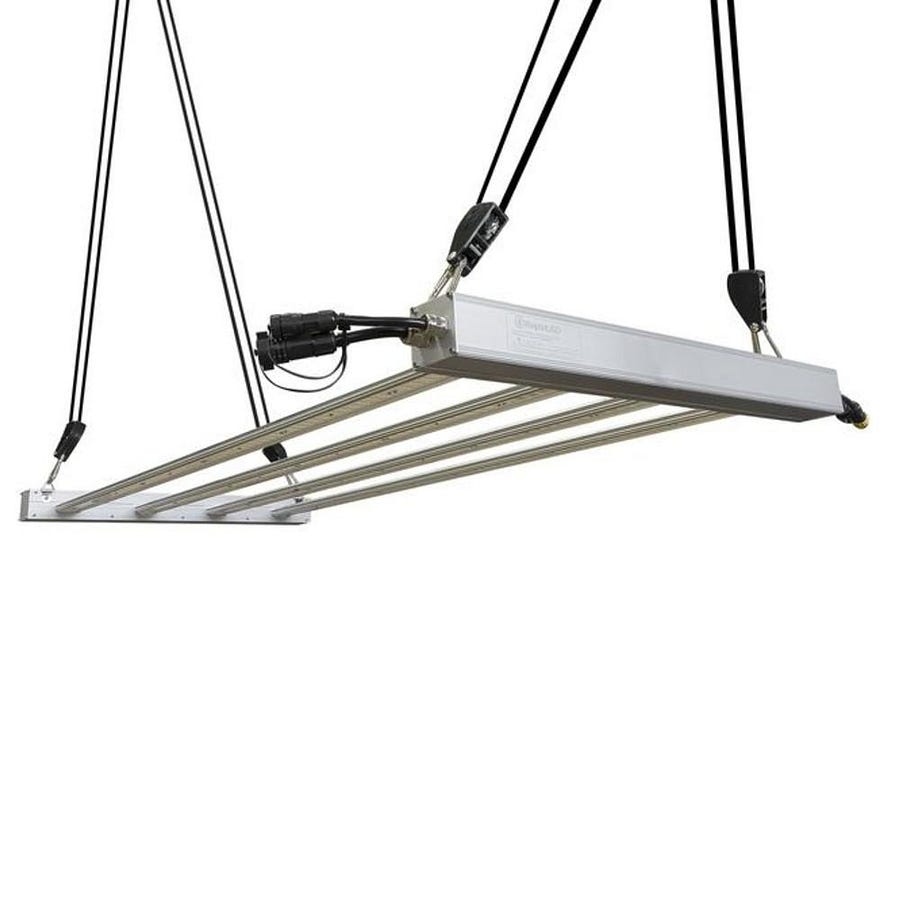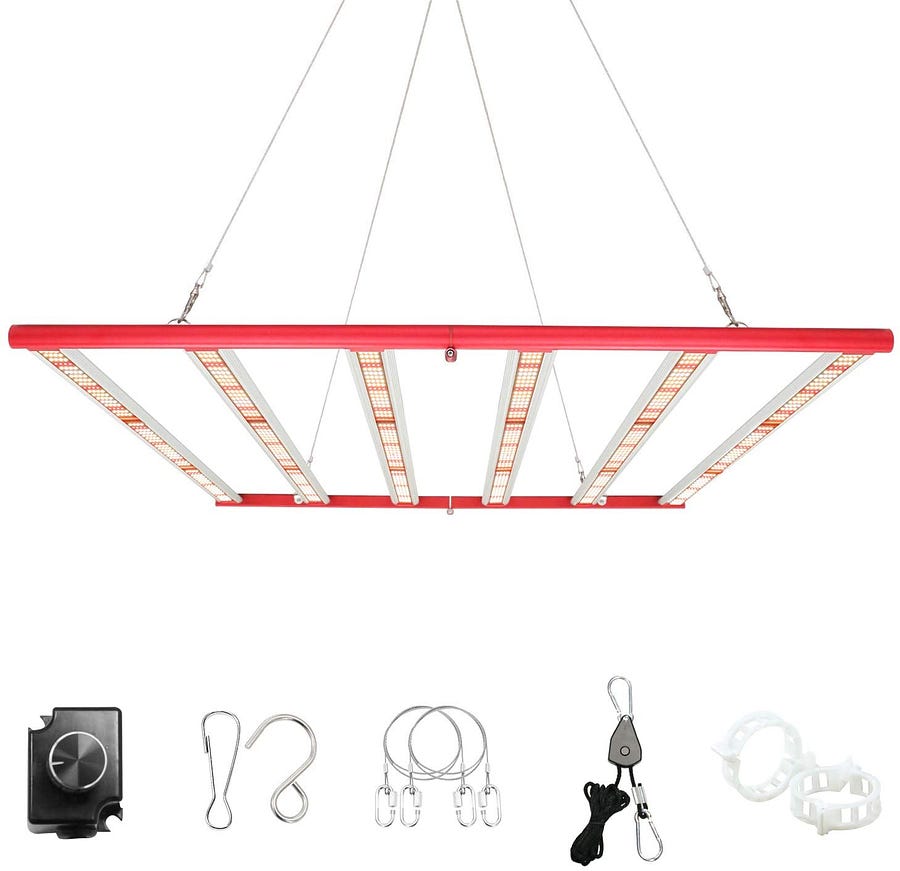3 Best LED Grow Lights For Indoor Growing: Buying Guide and Recommendation
LED grow lights are an artificial light source. They are generally electric lights designed to stimulate plant growth by emitting a light appropriate for photosynthesis. The primary benefits of LED over the more traditional light sources are that they significantly reduce heat and power consumption.
For the best possible results and high yield, you might want to try the best LED grow light in the market. There are hundreds of LED grow lights in the market, but not all are right for your grow room. When selecting the best, you need to ensure that it meets each of these criteria, we are going to discuss in this article to produce the highest yielding plants.
If you want the right one, here is the list of the top 3 LED grow lights that are best in the business for growing plants.
Before You Buy
LED stands for light-emitting diodes. LED lighting systems produce very little heat, come ready to plug-and-play, and can produce high yields with incredible energy efficiency. LED grow lights do not require a reflector and ballast like HID lights and LEDs can last for decades, where HID bulbs may have to be replaced yearly as they begin to lose Lumens.
But one of the main reasons LED grow lights have become a standard for serious growers is the spectrum of light they produce.
Full spectrum LED grow lights will make a huge difference in helping your plants grow to their full potential and yields. Red & blue spectrums are important, but infrared and ultraviolet spectrums can be essential depending on the growth stage of your plants. The light’s power is also an important factor, but different wave lengths are needed to be taken into consideration to ensure maximum growth.
You’ll also want to take into consideration the amount of space you need to cover with your LED lights. Every LED grow light will have a range of space that it effectively can cover, so it’s important to measure your grow space down carefully. Then you can research and read reviews for LED lights can actually cover your grow space efficiently and effectively.
Another factor when choosing the best LED grow light for you is durability and electrical efficiency since an LED grow light will typically operate for 12–18 hours a day. Remember, when researching LED lights you’ll want to note the total output. The more light your new LED light actually gives off, the bigger yields you should get, so choose the most powerful LED grow lights (within reason) for your grow space.
The Best Full Spectrum LED Grow Lights Recommend For You
ECO Farm FLD 320W Full Spectrum Dimmable LED Grow Lights Bar

Features:
ECO Farm LED grow light with upgraded SMD 3030 chip 6 passive-cooled led bars, higher light intensity, less light decay, better lumens and PAR values than ordinary LED chips. FLD 320W uses 1200 LED chips that consume only 320W, perfect coverage for 3x3ft, helps you achieve maximum quality and quantity. The intensity of light can be adjusted according to the needs of plants. It can be freely adjusted lighting intensity as plants need growth at different stages with dimming options ranging from 0 to 10 levels. SMD leds spectrum is white 3000K leds, white 5000K leds, 660nm red leds and 740nm IR leds. This professional-grade led grow light is designed for maximum results in all stages of growth.
Rapid LED FM320 LED Grow Light

Features:
The FM320 is the easiest to use fixture perfect for those that want a reliable, affordable lighting option ready to go out of the box. With system level efficiency between 2.5–2.7 umol/J and a choice of either 3200K or 4000K color temperature this fixture is great for either full-cycle/veg/rooting (4000K) or flowering (3200K). Link multiple units together to save on outlet space for both power and dimming. No matter how large or how small your grow or garden, you want consistent, high-quality results from the best LED grow lights you can find. This energy efficient led grow light pulls a true 300 watts from the outlet and has been proven in side-by-side tests to achieve equal or better results
AGLEX M320 LED Grow Light Bar for Indoor Plants

Features:
AGLEX M320 led grow light comes with upgraded SMD 3030 chips and 6 efficient aluminum bars, ensuring higher efficacy PPE 2.8umol/J and better heat-dissipation, longer lifespan. Max 2.8g yield per wattage with 30% higher average PPFD and 50% greater yield & quality compared with the old plant lights. Only consumes 320w with 672 LEDs , perfect coverage for 4.5x6ft , The 320w led grow light M320 will help you achieve maximum quality and quantity. The 320w led grow light is equipped with external driver and dimmer, power cord length 76.5 inch. You can freely control and adjust light intensity outside of grow tent, no need go into.
What do you need to consider when buying Grow lights?
Importance of Red — Phytochrome Sensors
Plants transform CO2 into sugar to fuel their life; literally, light is the source of life in plants. When the light is not sufficient, they can even change the locations, angles and shapes of their leaves, among other things. Somehow, plants seem to be able to recognize when they are shaded by the foliage of neighboring plants versus that of the shade from a rocks, buildings, etc., but how do they do it?
Plants recognize the shades of neighboring plants by sensing the ratio between red and far red light using specific light sensors called the phytochrome. In the shades formed by the foliage of neighboring plants, the ratio of red over far red light increases because red light is mostly absorbed by chlorophyll whereas far red light is reflected by leaves. When the ratio of red over far red light increases, phytochrome change their structure from Pr to Pfr, which leads to shade avoidance responses including stem elongation via increase of auxin concentrations in plant cells.
Plants also sense the seasonal change in light intensity, the length of daytime, temperature, etc. and decide when to germinate, when to grow and when to bloom. Daily and seasonal change in plants are cued by changes in the quality and quantity of sunlight and orchestrated by the biological clock in plants. Perilla plants were reported to produce only 6% of seeds when grown next to street lights. It is because the biological clock of plants was disturbed by the artificial light overnight. Making sure you plants not only get the proper spectrum of light but also the proper amount of it, not just in brightness but also in the amount of time a pant gets light is very important for the different stages of growth. This is often why even outdoor growers and greenhouses use supplemental lighting. As the hours of sunlight from the sun changes not only through different seasons but at different latitudes on Earth. With the addition of supplemental lighting, growers are able to simulate the amount of light a plant receives in different seasons. This allows growers to grow plants not native to certain latitudes and also to grow crops in all different stages of growth at anytime of the year. These are the tricks that are helping grow just about any type of plant in any area of the world. This is very important to food production in areas with temperate zones that previously were unable to grow crops necessary to feed the locals.
Par Value
Photosynthetic Active Radiation (PAR) is a measurement given to LED lights that is simply the intensity of light shining on a plant. PAR is measured in photons, a particle of light, and ideally ranges from 400–700 nanometers. PAR is also a measurement of the light in the color spectrum that is able to be used by plants. Plants use these photons to turn carbon dioxide and water from the air into glucose and oxygen, in turn making the plant grow. The action of turning this carbon dioxide and water into glucose and oxygen is known as photosynthesis. LED full spectrum lights offer an ideal range of photons for plants that are most suitable for plants to undergo photosynthesis.
Kelvin
Kelvin is the measure of color temperature and is extremely important when selecting what type of lights you will need. Kelvin is the color of light emitted in reference to a temperature. The color of light is important because under different colors, some plants grow differently. A kelvin of 2700 is most closely associated with everyday lighting that we would see in our homes, while typical daylight is near 6500k.
Grow Cycle
Because LED lights can be adjusted to different colors which affect the grow cycle differently, they are the ideal choice for all types of indoor grows. As plants grow, they must first establish a root system that will support the eventual flowering process. When in this stage, referred to as the bloom stage, plants are in need of more red lighting. As they progress out of the bloom stage, into the flowering stage, LED lights can be adjusted to change from mostly red lighting into a bluer based light plan.
This adjustment makes plants grow to their best potential, while maximizing potential profits. Once plants are ready to harvest, a lower level of blue lighting is required. In some instances, growers will turn LED lights off completely to let plants actively adjust to a natural state of night.
Conclusion
I hope you’ve found this information helpful. For more grow light reviews, please see our LED Grow Light Reviews. Best of luck with your grow!
评论
发表评论